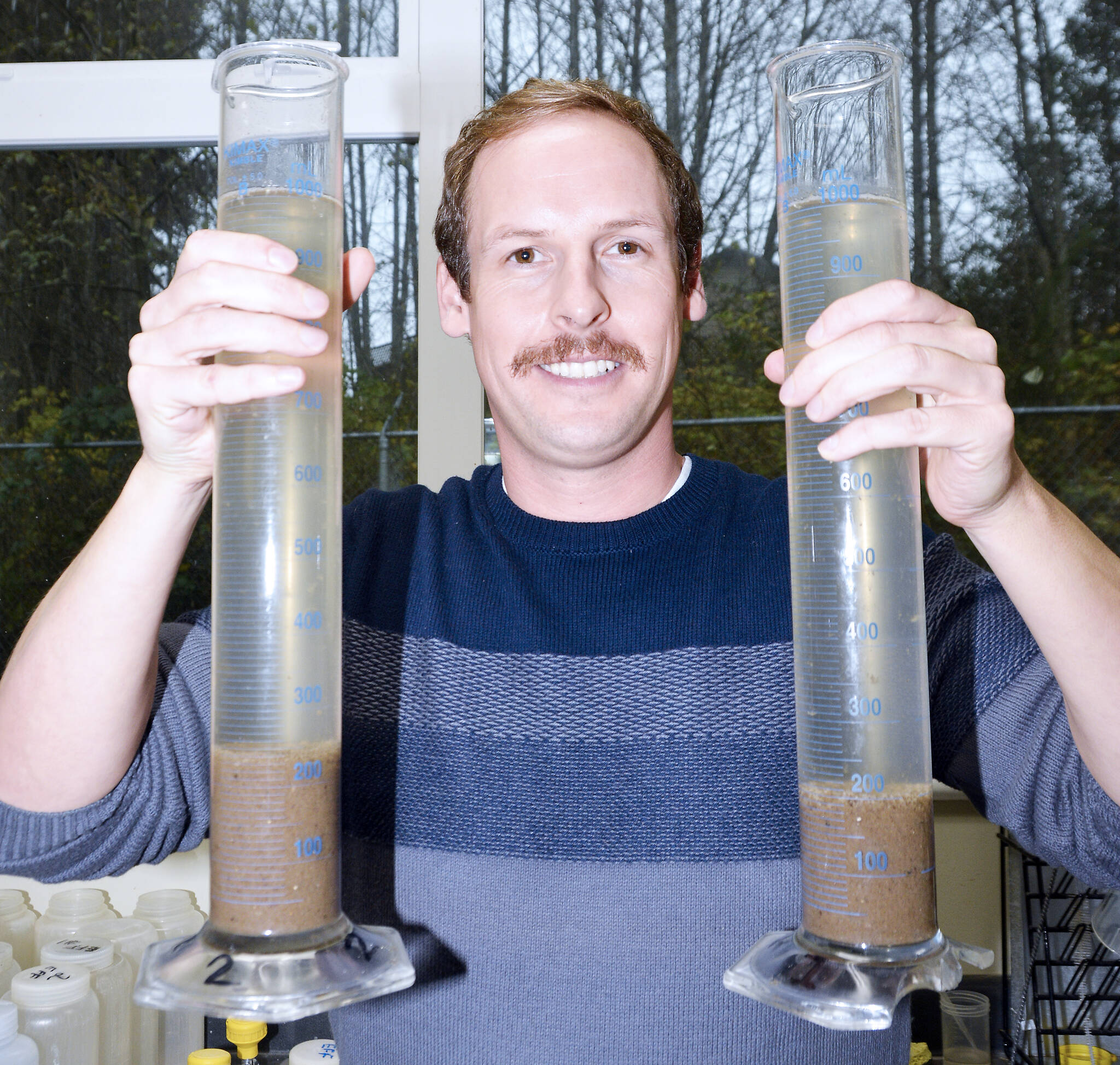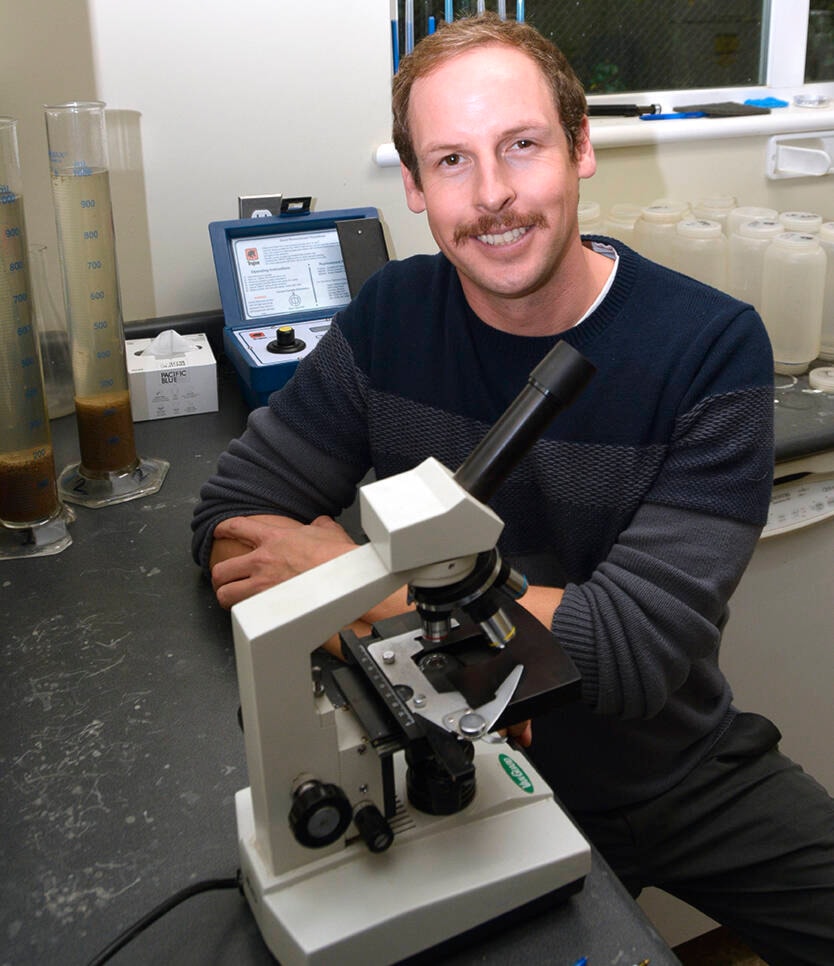Flush the toilet.
Push that lever, and everything inside gets swept away. You never have to think about it, where it goes, it’s gone, like magic.
But hold on. It’s not magic.
What you flush down the toilet, or put down the drain, doesn’t just disappear.
Suppose your home is on the Sooke sewer system. In that case, everything you flush away flows through underground pipes, down the street and around a few corners, to the wastewater treatment facility on West Coast Road, where the water gets filtered and treated before being released back into the environment.
That’s a lot of gunk.
But that’s how Sooke protects the community’s precious water resources and environment.
•••
So, let’s go with the flow and look at how the Sooke Wastewater Treatment cleans the water.
The cleaning process begins underground, where you will find two influent pipes ranging in size from eight to 12 inches. An average of one million gallons of wastewater flow through the influent pipes every day.
https://youtu.be/WjEMJasQw98
Plant operators routinely sample the water at different stages in the treatment process. Then, water quality tests are performed in the on-site lab. Sampling gives a snapshot of what’s in the water as it comes into the plant before any treatment.
There’s a lot of water in wastewater from residential showers, sinks, washing machines, dishwashers and toilets, and from businesses such as restaurants and office buildings.
The wastewater that arrives at the plant is about 99 per cent water and just one per cent waste. It’s the wastewater facility’s staff job to get that one per cent out of the water.
That is a complex process requiring many steps.
•••
Raw sewage (also known as influent) enters the treatment plant from the collection system that leads into the headworks building, which is the first step for the wastewater. It gets pushed into a fine screen where large pieces of trash, everything from food and condoms to wipes and feminine products are captured.
After these larger particles have been removed, the influent continues to a grit removal system. This is where sand, gravel, coffee grounds, eggshells, etc. are removed. Any particles removed during the screening and grit removal processes are dewatered, and the solids will be disposed of offsite.
ALSO READ: CRD putting finishing touches on five-year wastewater project
Once screening and grit removal is completed, the influent is treated in two sequential batch reactors (SBR). The reactors are a flow-through system, so there is no interruption between operation cycles.
Three different cycles happen in the SBRs: aeration, settling and decanting. The two SBR systems allow one basin to aerate while the other is decanting.
In the aeration cycle, the basin is dosed with dissolved oxygen to aid in the biological oxidation needed to treat the wastewater. Also, during the aeration cycle, the basin will fill. After the aeration cycle is complete, the dissolved oxygen stops dosing, and the settling cycle begins.
“The micro-organisms here are the stars of the show, and everything is about keeping them happy so they can work the best way they can,” said plant manager Paul Bohemier.
“The main thing is making sure they have enough oxygen, but not too much. Enough food, but not too much.”
In the settling cycle, any sludge produced by the biological oxidation treatment is given time to settle, which allows for clear water to be left on top of the basin.
The last cycle in the SBR’s is the decant cycle. The decant cycle will discharge the clear water (effluent) to the UV channel, which is the last step for the treatment before the effluent is discharged to the ocean.
During the decant cycle, the sludge created from the aeration cycle and settled out in the settling cycle is wasted into the digesters. The sludge is aerated in cycles in the digesters to age it enough to process in the centrifuge. The centrifuge dewaters the sludge, allowing the solids to be disposed of offsite and the water (centrate) to be returned to the headworks building to start the treatment process over.
•••
A few months ago, while checking on a sewer pipe problem, work crews encountered an even bigger problem – grease clogging up water pipes.
“Grease is one of our biggest problems,” Bohemier said. “It can jeopardize the pumping, back up sewage in houses, plug all the lines and stop treatment (at the wastewater plant).”
RELATED: Sooke cooks up new regulations for food trucks
The situation got so bad last summer that the District of Sooke brought in stricter regulations for food trucks when it was discovered some were dumping cooking grease into the system. And those dumping grease received a rebuke from district council at a recent meeting.
Grease remains suspended in sewage and coats the system. Bohemier has been in sewer pipes 15 feet high, completely clogged with grease in his career.
“It’s an everywhere problem, but preventable,” he said.
“Even though we end up removing the fats, oils and grease, it’s best if you don’t put them down the drain, to begin with.”
Bohemier’s suggestion? Use an empty can or jar to collect fats, oils and grease, let it solidify and then throw it out in the trash.
•••
The Sooke wastewater management system will undergo an expansion next year.
The $6.6-million project will see the treatment plant receive structural and mechanical upgrades, and the local wastewater collection system will be extended to increase sewer capacity.
The enhancements will allow Sooke and T’Sou-ke Nation to accommodate future residential and commercial growth while improving water quality in the Sooke Basin.
“Our goal is to improve the environment and the overall health of the Sooke Basin,” Mayor Maja Tait said, with the long-term goal of getting as many people as possible connected to the sewer system.
‘This is an important first step.”
Concerns have been raised for years about the Sooke basin and harbour’s environmental health, as the water quality continues to deteriorate.
The T’Sou-ke Nation traditionally harvested shellfish in the Sooke marine areas. Still, the area has been closed to harvesting for years due to high fecal coliform and enterococci counts.
When the wastewater plant began operation, there was a significant improvement to the marine areas in Sooke’s core. However, contaminants are still found in areas where homes remain on septic tanks.
“If we get more people off septic and onto sewer, then the harbour’s health will improve and improve,” said Christina Moog, the district’s communications coordinator.
RELATED: New funding for wastewater plant will improve environment
editor@sookenewsmirror.com
Like us on Facebook and follow us on Twitter

